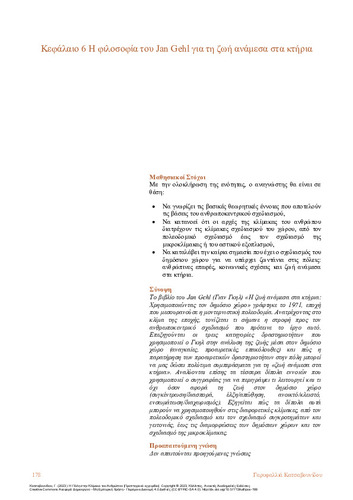| Title Details: | |
|
Jan Gehl’s philosophy for the life between buildings |
|
| Authors: |
Katsavounidou, Garyfallia Katsavounidou, Garyfallia |
| Description: | |
| Abstract: |
Jan Gehl’s book Life between buildings: Using public space first appeared in 1971, when Modernist urban planning prevailed in academia and in practice. In the midst of this cultural climate, it was a bold turn to propose a human-centered approach, as this book did. Gehl uses three types of outdoor activities in his analysis of public life: necessary, optional and social. He stresses out how observational studies in public spaces can give us valuable input about “life between buildings.” The author uses four binary oppositions to describe what works and what doesn’t as far as public life is concerned: To assemble or disperse, to integrate or segregate, to invite or repel, to open up or close in. These four oppositions can be applied in different spatial scales, from the scale of land use planning and of city plans to the design of districts and of neighborhoods, to the design of public spaces and the microscale of physical design.
|
| Linguistic Editors: |
Triantari, Maria Triantari, Maria |
| Graphic Editors: |
Oikonomou, Evangelia Oikonomou, Evangelia |
| Type: |
Chapter |
| Creation Date: | 27-06-2023 |
| Item Details: | |
| License: |
Attribution - NonCommercial - ShareAlike 4.0 International (CC BY-NC-SA 4.0) |
| Handle | http://hdl.handle.net/11419/9837 |
| Bibliographic Reference: | Katsavounidou, G., & Katsavounidou, G. (2023). Jan Gehl’s philosophy for the life between buildings [Chapter]. In Katsavounidou, G. 2023. The City at Human Scale [Undergraduate textbook]. Kallipos, Open Academic Editions. https://hdl.handle.net/11419/9837 |
| Language: |
Greek |
| Is Part of: |
The City at Human Scale |

